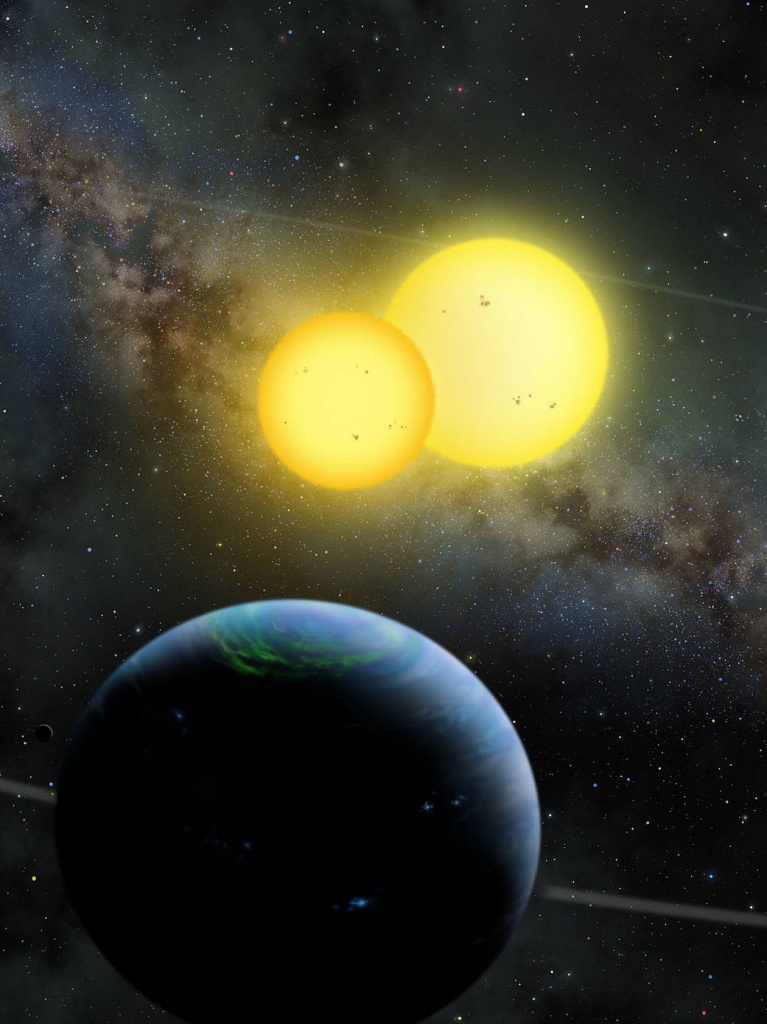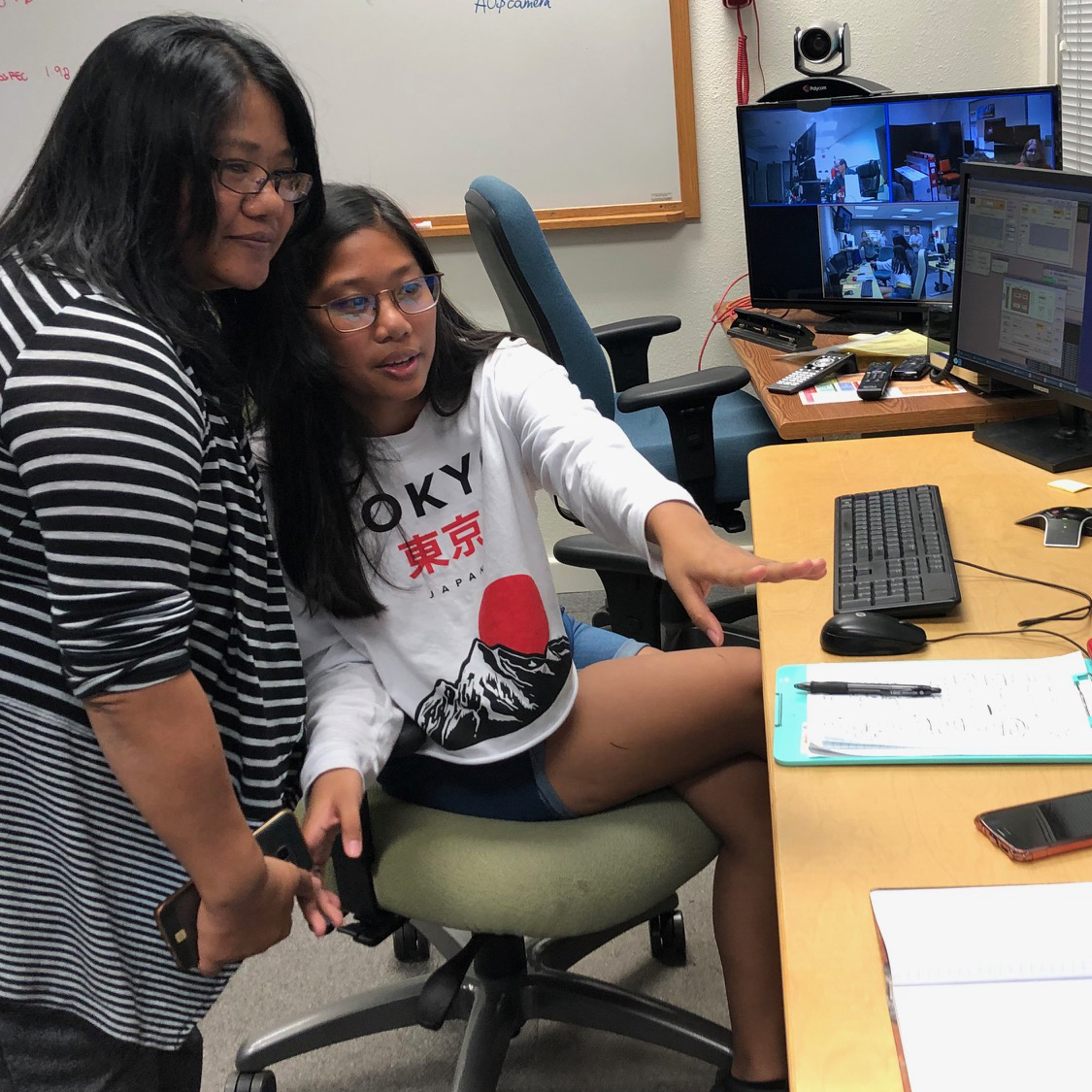Maunakea, Hawaii – The Star Wars universe turned from science fiction to science fact for an Oahu student, who recently observed a real-life ‘Tatooine’ using one of the largest, most scientifically-impactful observatories in the world.
On November 19, 2018, from 6:30 – 7:30 p.m., Waipahu High School Senior Laura Daclison performed professional, astronomical observations of Kepler-35 using W. M. Keck Observatory on Maunakea, Hawaii.
Like Luke Skywalker’s home planet where you can see two suns in the sky, Kepler-35 has a planet that orbits a pair of stars – a type of system called a circumbinary.

Daclison used Keck Observatory’s instrument HIRES (High-Resolution Echelle Spectrometer) on the Keck I telescope to study Kepler-35; her goal is to find out what would happen if Earth had two suns.
“I chose Kepler-35 because the two stars are really similar to our sun,” said Daclison. “I thought, if Earth had two suns just like Kepler-35, maybe there would be some correlation between them.”
Because there are so few known circumbinaries, Daclison wants to help astronomers gain a better understanding of these special systems.
Helping guide and mentor Daclison during her observing night were Keck Observatory Support Astronomer Josh Walawender, Canada-France-Hawaii-Telescope Outreach Program Manager Mary Beth Laychak, University of Hawaii Institute for Astronomy (UH IfA) graduate students Christian Flores and Anna Payne, and UH IfA postdoc Lauren Weiss.

Daclison’s experience is part of the Maunakea Scholars program where local students at Hawaii public high schools can apply for observing time on world-class telescopes on Maunakea.
“Maunakea Scholars is a fabulous opportunity for students to really do science and it’s possible because of the University of Hawaii,” said Laychak. “We have contributions from all of the observatories – every telescope on the mountain gives observing time to these students. It gives them a really unique opportunity to not just learn about science, but actually do science.”
Daclison scored highly-competitive observing time at Keck Observatory after her proposal to study Kepler-35 was selected in February of this year. She is only the second high school student/Maunakea Scholar to observe at Keck Observatory since the facility’s twin telescopes began science operations 25 years ago.
“This is definitely science that you would expect to come from a professional astronomer,” said Walawender. “In fact, once Laura had showed me her proposal, I got her in touch with some professional astronomers who were doing very similar work on slightly different types of stars. And Laura actually got them to look at a slightly different type of object than they might have otherwise. She did great!”
IN THE NEWS:
ABOUT HIRES
The High-Resolution Echelle Spectrometer (HIRES) produces spectra of single objects at very high spectral resolution, yet covering a wide wavelength range. It does this by separating the light into many “stripes” of spectra stacked across a mosaic of three large CCD detectors. HIRES is famous for finding exoplanets. Astronomers also use HIRES to study important astrophysical phenomena like distant galaxies and quasars, and find cosmological clues about the structure of the early universe, just after the Big Bang.
ABOUT W. M. KECK OBSERVATORY
The W. M. Keck Observatory telescopes are the most scientifically productive on Earth. The two, 10-meter optical/infrared telescopes atop Maunakea on the Island of Hawaii feature a suite of advanced instruments including imagers, multi-object spectrographs, high-resolution spectrographs, integral-field spectrometers, and world-leading laser guide star adaptive optics systems. Keck Observatory is a private 501(c) 3 non-profit organization operated as a scientific partnership among the California Institute of Technology, the University of California, and the National Aeronautics and Space Administration. The Observatory was made possible by the generous financial support of the W. M. Keck Foundation. Visit www.keckobservatory.org to learn more.
ABOUT MAUNAKEA SCHOLARS
Maunakea Scholars is an innovative program designed to bring Hawaii’s aspiring young astronomers into the observatory community, competitively allocating observing time on world-class telescopes to local students. Initiated by Canada-France- Hawaii Telescope (CFHT) and Gemini International Observatory, the Maunakea Scholars program is a partnership between the Maunakea Observatories (MKO) and the Hawaii State Department of Education (DOE). Visit www.maunakeascholars.com for details.


